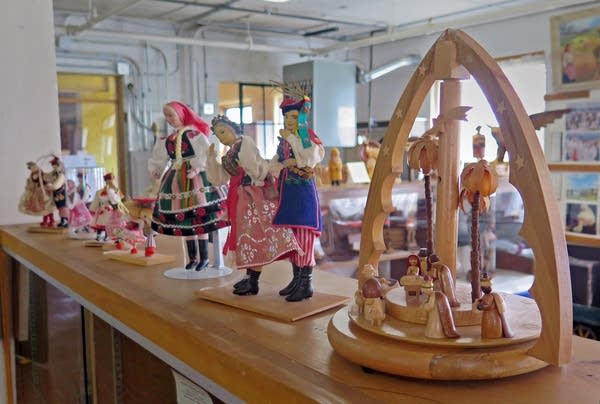Priest breathes life into Winona's Polish history

Go Deeper.
Create an account or log in to save stories.
Like this?
Thanks for liking this story! We have added it to a list of your favorite stories.
Polish pride runs deep in the Rev. Paul Breza.
Breza, 77, is a retired Catholic priest, born and raised in Winona, Minn. The city's immigration history resembles much of Minnesota's, with lots of Germans and Scandinavians.
But there's a twist: A surprising number of people have Polish backgrounds.
"Two thousand people worked for the sawmills in Winona," Breza said. "Twelve hundred of them were Polish."
Turn Up Your Support
MPR News helps you turn down the noise and build shared understanding. Turn up your support for this public resource and keep trusted journalism accessible to all.
Some of Minnesota's first Polish immigrants arrived in 1855. Several thousand made their homes in and around Winona, because there were jobs.
Many of them were educated, Breza said, as "pharmacists, as teachers, as musicians." But they didn't speak English, and "they all had to work stacking logs."

Thirty years ago, Breza started a museum to tell the story of Polish immigration to the city — with an important footnote: Many of the immigrants came from an area of northern Poland called Kashubia. The Kashubian language is sort of, but not really, related to Polish.
Polish emigres had many reasons for leaving their homeland. For decades, they were oppressed by a succession of neighboring powers. Poverty was widespread.
For many of the men, the motive was to avoid unceasing war. Breza's grandfather came to Winona to evade the draft.
"They were pretty much escapees from Kaiser Wilhelm," he said.

Today, the story is told in the Polish Museum near the city's riverfront. It's in a rambling old building that once served as the headquarters of a lumber company.
Among the photos and artifacts is a bookcase filled with pocket-sized volumes printed in Polish. "Prayer books," Breza explained. "Nobody uses them anymore. They don't know how to read them. So they come here."

Breza's tour includes identification and expert pronunciation of all sorts of items, including a mysterious baking implement.
"This is a kapunka," he said. "You raise your bread in there."
The most eye-catching collection in the museum is the scissors art, which Breza identified as "wycinanki."
The cutters wielded sharp scissors to trim paper of various colors and then create spectacular designs, a folk art that is fast disappearing. "I would go crazy cutting those out," he said.
The museum has a small staff. Most days, Breza is there to open the door. One of his first duties is to power up the background music that greets visitors: Polish polkas.
Breza said he created the museum to tell a story not often found in historical records. "You never save the history of poor people, and Polish people were all deemed to be in that category," he said. "So something had to be done."


